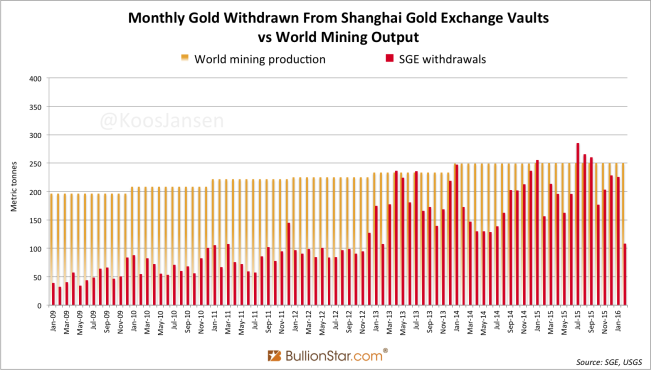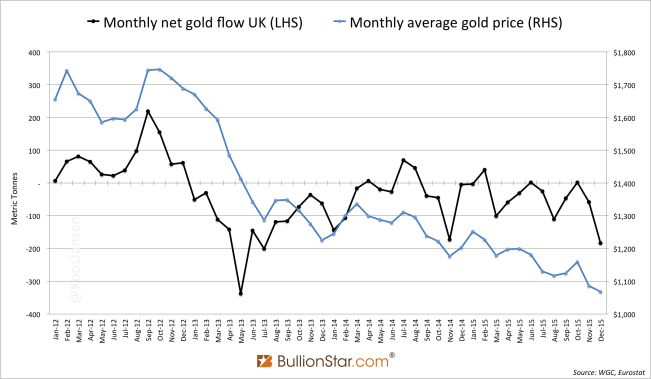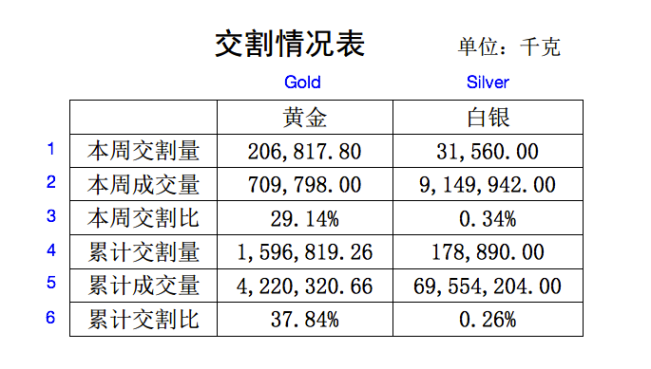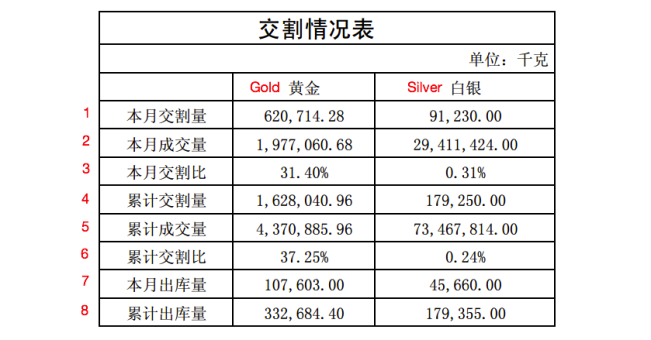SGE to Continue Publish Withdrawal Data!
I’ve received written confirmation by the Shanghai Gold Exchange (SGE) delivery department that the Chinese Market Data Monthly Reports disclose the volume of physical gold withdrawn from SGE designated vaults. I’m thrilled to resume reporting these numbers and everything related to the Chinese gold market!
It’s advised to have read The Chinese Gold Market Essentials Guide before you continue.
Because of the structure of the Chinese gold market the volume of physical gold withdrawn from the vaults of the SGE provides us a unique measure of Chinese wholesale gold demand – which in recent years has been more than twice as much as Chinese consumer gold demand reported by the World Gold Council. However, it appeared the SGE ceased publishing SGE withdraw numbers after a press release from 11 January 2016 that stated the bourse “adjusted some terms in the Delivery Reports”. After the announcement SGE withdrawals were not disclosed in the Chinese Market Data Weekly Reports and over the phone I was informed withdraw numbers would not be disclosed any longer by the SGE.
Perhaps I spoke to the wrong people at the SGE or perhaps the SGE has changed its mind. In any case, in the first Chinese Market Data Monthly Report of this year (January) the format was different from the Chinese Market Data Weekly Reports. In the Chinese monthly report it showed a number that looked to be the volume of gold withdrawn from the vaults. Though we couldn’t be too sure as the SGE changed its nomenclature since the press release from 11 January.
Once again I contacted the SGE and finally came in touch with an employee at the delivery department. The person in question told me over the phone that indeed the January monthly report disclosed withdraw data, but because confirmations over the phone can be easily violated, I also asked for written confirmation. Then, a few days later the SGE delivery department confirmed over email that the Market Data Monthly Reports include the volume of gold withdrawn from SGE designated vaults!
So, here we go again. The SGE monthly report from February shows withdrawals from the vaults of the SGE accounted for a modest 107.6 tonnes, down 52 % from January and down 31 % from February 2015.
Year to date SGE withdrawals have reached 333 tonnes, down 19 % year on year.
Subdued SGE withdrawals – indicating suppressed Chinese physical gold demand – in February is very remarkable as in this month the price of gold (in US dollars) increased by over 10 %.
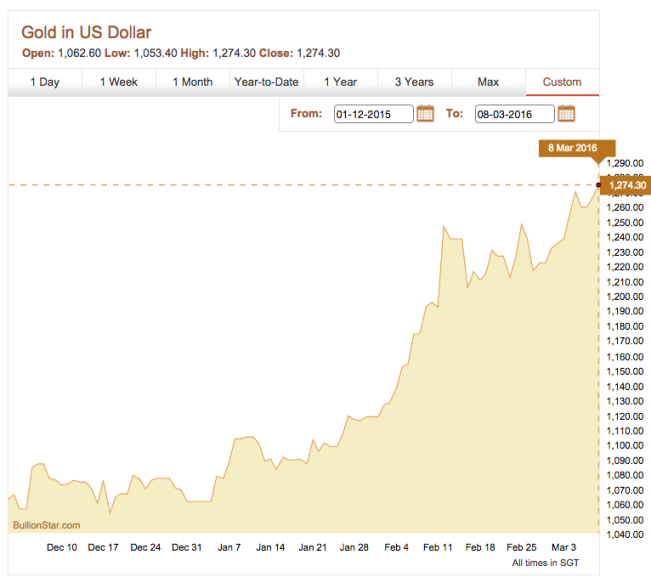
This suggests that the Chinese do not buy physical gold when the price goes up but mainly buy when the price goes down. In addition, because there has been strong buying from Western parties in February, for example GLD inventory in London increased by 15 % over this period, we can conclude the West is the price setter and China up until now has predominantly been a “price taker". Put differently, China is merely taken advantage of bargain prices.
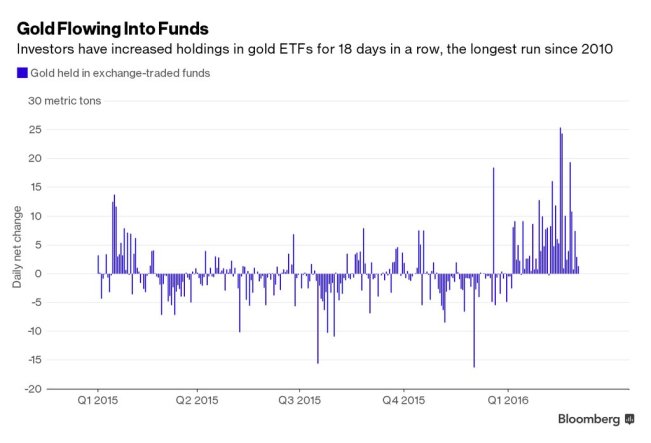
The same correlation between the price of gold and Western physical buying behaviour can be observed when we compare the gold price to cross-border gold trade from the UK, where many Western investors store their gold.
So for this comparison we use UK cross-border gold trade as a proxy for Western physical gold buying. Although this is not exact science, in the chart above we can see whenever the West is buying physical gold (UK net import increases, see 2012) the price goes up and whenever the West is selling physical gold (UK becomes net exporter, see 2013) the price goes down.
Given the fact the price of gold has increased significantly year to date we may expect the UK was not a net exporter in January and February, more likely the UK was a net importer over this time horizon.
Addendum
Because there has been so much confusion about the terms used in the new Chinese Market Data Monthly Reports and the Market Data Weekly Reports I included screenshots of both reports below provided with translations as suggested by the SGE press release from 11 January 2016. In the Market Data Weekly Report for week 7 (22 – 26 February) 2016 we can see the following Delivery Report.
- Delivery amount this week, the sum of the trading volumes in physical products and the contract delivery volumes of deferred products for the reported week, counted bilaterally in Kg.
- Trading volume this week, the sum of all trading volumes in physical and deferred products for the reported week, counted bilaterally in Kg.
- Delivery ratio this week, the proportion of the delivery amount to the total trading volume of both physical and deferred products for the reported week (1 divided by 2).
- Cumulative delivery amount, the sum of all weekly delivery amounts from the beginning of the year to the statistical time point, counted bilaterally in Kg.
- Cumulative trading volume, the sum of all trading volumes in physical and deferred products from the beginning of the year to the statistical time point, counted bilaterally in Kg.
- Cumulative delivery ratio, the proportion of the cumulative delivery amount to the cumulative trading volume of both physical and deferred products from the beginning of the year to the statistical time point (4 divided by 5).
In the Market Data Monthly Report for February 2016 we can see this Delivery Report:
- Delivery amount this month, the sum of the trading volumes in physical products and the contract delivery volumes of deferred products for the reported month, counted bilaterally in Kg.
- Trading volume this month, the sum of all trading volumes in physical and deferred products for the reported month, counted bilaterally in Kg.
- Delivery ratio this month, the proportion of the delivery amount to the total trading volume of both physical and deferred products for the reported month (1 divided by 2).
- Cumulative delivery amount, the sum of all monthly delivery amounts from the beginning of the year to the statistical time point, counted bilaterally in Kg.
- Cumulative trading volume, the sum of all trading volumes in physical and deferred products from the beginning of the year to the statistical time point, counted bilaterally in Kg.
- Cumulative delivery ratio, the proportion of the cumulative delivery amount to the cumulative trading volume of both physical and deferred products from the beginning of the year to the statistical time point (4 divided by 5).
- Load-out volume this month, the amount of gold withdrawn from the vaults, counted unilaterally in Kg.
- Cumulative load-out volume, the amount of gold withdrawn from the vaults from the beginning of the year to the statistical time point, counted unilaterally in Kg.
Final notes: “delivery” is not the same as “load out volume” or “withdrawals”. “Delivery” refers to the amount of gold that changes ownership inside the vaults, “load out volume” and “withdrawals” both refer to the amount of gold that leaves the vaults.
The load-out volume for silver does not reflect Chinese wholesale silver demand, as the structure of the Chinese silver market is different from the Chinese gold market.
According to my manual cross calculations the “delivery amount" in the weekly report for week 7 does not match “the sum of the trading volumes in physical products and the contract delivery volumes of deferred products for the reported week". I’ve send out an inquiry to the SGE to verify the data.
UPDATE 10 March 2016: The SGE replied how they calculated “delivery amount", it was based on the delivery of Au(T+N1) and Au(T+N2) in 100 gram per lot. It appeared I had an SGE sheet with false specifications of Au(T+N1) and Au(T+N2) – 1 Kg per lot. My manual cross calculations and the SGE numbers match now.
Popular Blog Posts by Koos Jansen
 China’s Secret Gold Supplier is Singapore
China’s Secret Gold Supplier is Singapore
 Audits of U.S. Monetary Gold Severely Lack Credibility
Audits of U.S. Monetary Gold Severely Lack Credibility
 China Gold Import Jan-Sep 797t. Who’s Supplying?
China Gold Import Jan-Sep 797t. Who’s Supplying?
 The Gold-Backed-Oil-Yuan Futures Contract Myth
The Gold-Backed-Oil-Yuan Futures Contract Myth
 Estimated Chinese Gold Reserves Surpass 20,000t
Estimated Chinese Gold Reserves Surpass 20,000t
 Did the Dutch Central Bank Lie About Its Gold Bar List?
Did the Dutch Central Bank Lie About Its Gold Bar List?
 PBOC Gold Purchases: Separating Facts from Speculation
PBOC Gold Purchases: Separating Facts from Speculation
 U.S. Mint Releases New Fort Knox Audit Documentation
U.S. Mint Releases New Fort Knox Audit Documentation
 China Net Imported 1,300t of Gold in 2016
China Net Imported 1,300t of Gold in 2016
 Why SGE Withdrawals Equal Chinese Gold Demand and Why Not
Why SGE Withdrawals Equal Chinese Gold Demand and Why Not






 Koos Jansen
Koos Jansen